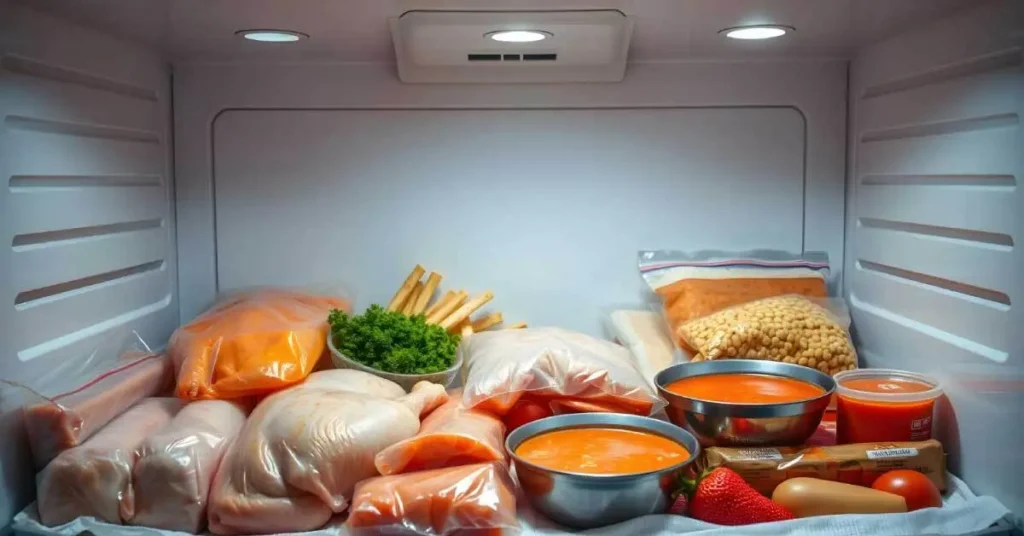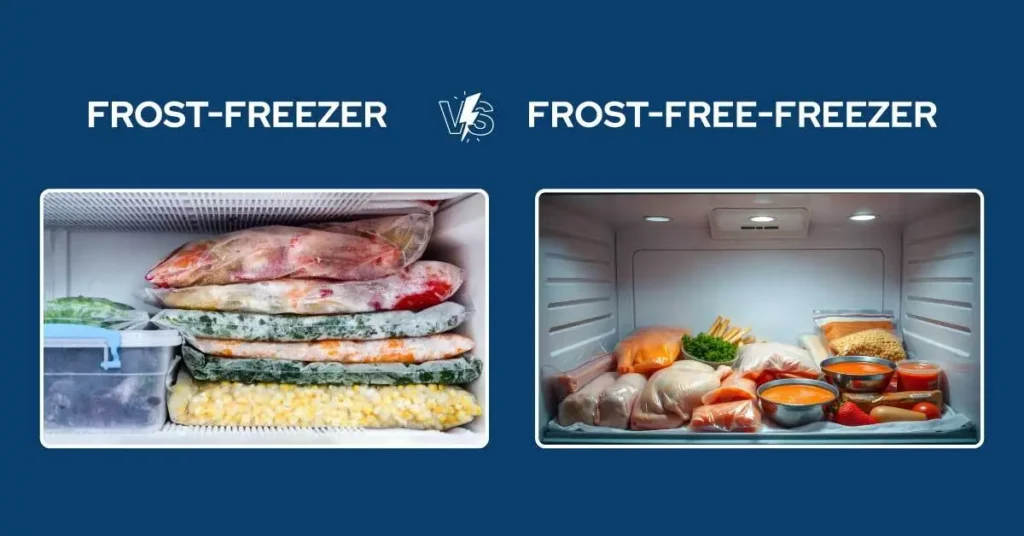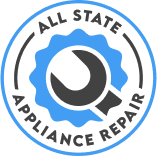When choosing a freezer, one of the most critical decisions is whether to opt for a manual defrost or a frost-free model. Each type has unique advantages, maintenance requirements, and potential drawbacks that can impact performance, energy efficiency, and food storage quality. This comprehensive guide explores the differences between manual defrost and frost-free freezers, provides actionable maintenance tips, and answers common questions to help you make an informed choice. Whether you’re a homeowner, a restaurant owner, or managing a laboratory, understanding these systems will ensure your freezer operates at its best.
What Are Manual Defrost and Frost-Free Freezers?
Manual Defrost Freezers

A manual defrost freezer requires you to periodically remove ice buildup by manually thawing it. These freezers lack automatic defrosting mechanisms, so ice accumulates on the interior walls and cooling coils over time. While this requires more hands-on maintenance, manual defrost freezers are often preferred for their energy efficiency and ability to maintain consistent temperatures.
Frost-Free Freezers

Frost-free freezers, also known as auto-defrost or self-defrost freezers, use a heating element and fan system to periodically melt ice buildup, preventing frost accumulation. The melted water drains into a pan, where it evaporates. This convenience comes at the cost of higher energy consumption and potential temperature fluctuations during defrost cycles.
Manual Defrost vs. Frost-Free Freezers: Key Differences

To choose the right freezer, it’s essential to understand how these systems compare in terms of efficiency, maintenance, cost, and food preservation. Below, we break down the key differences.
1. Maintenance Requirements
- Manual Defrost: Requires regular defrosting (every 6–12 months, depending on usage) to remove ice buildup. This process involves unplugging the freezer, removing food, and allowing ice to melt, which can take several hours.
- Frost-Free: No manual defrosting is needed, as the system automatically prevents frost buildup. However, regular cleaning is still necessary to maintain efficiency and hygiene.
2. Energy Efficiency
- Manual Defrost: More energy-efficient because they don’t use additional energy for defrost cycles. They maintain a steady temperature, reducing compressor strain.
- Frost-Free: Consumes more energy due to periodic heating cycles. The U.S. Department of Energy notes that frost-free models can use up to 20% more electricity than manual defrost freezers.
3. Food Preservation
- Manual Defrost: Provides consistent cold temperatures, ideal for long-term food storage, especially for sensitive items like meats or laboratory samples. However, ice buildup can reduce storage space if not addressed.
- Frost-Free: Temperature fluctuations during defrost cycles can slightly affect food quality over time. Some users report freezer burn due to the fan’s air circulation.
4. Cost
- Manual Defrost: Typically less expensive upfront and cheaper to operate due to lower energy consumption.
- Frost-Free: Higher initial cost and ongoing energy expenses, but the convenience of no manual defrosting appeals to busy households or commercial settings.
5. Noise Levels
- Manual Defrost: Generally quieter, as they lack the fans and heating elements used in frost-free models.
- Frost-Free: May produce noticeable noise during defrost cycles, which can be a concern in quiet environments.
Pros and Cons of Manual Defrost Freezers
Pros
- Energy Efficiency: Lower energy consumption makes them cost-effective over time.
- Consistent Temperature: Stable cold temperatures are ideal for long-term storage of food or sensitive materials.
- Affordable: Typically lower purchase price compared to frost-free models.
- Longevity: Fewer mechanical components mean less wear and tear, potentially extending the freezer’s lifespan.
Cons
- Time-Consuming Maintenance: Manual defrosting can take hours and requires planning to relocate food.
- Ice Buildup: Reduces usable storage space if not defrosted regularly.
- Labor-Intensive: Cleaning and defrosting require physical effort and time.
Pros and Cons of Frost-Free Freezers
Pros
- Low Maintenance: No need to manually defrost, saving time and effort.
- Consistent Storage Space: No ice buildup means maximum usable space at all times.
- Convenience: Ideal for busy households or commercial kitchens where downtime is a concern.
Cons
- Higher Energy Costs: Increased electricity usage due to defrost cycles.
- Temperature Fluctuations: Defrost cycles may cause minor temperature changes, potentially affecting food quality.
- Potential Freezer Burn: Air circulation from fans can dry out improperly sealed food.
Maintenance Tips for Manual Defrost Freezers
Maintaining a manual defrost freezer ensures optimal performance and extends its lifespan. Follow these steps to keep your freezer in top condition.
1. Regular Defrosting
- Frequency: Defrost every 6–12 months or when ice buildup reaches 1/4 inch thick.
- Steps:
- Unplug the freezer and remove all food. Store food in a cooler with ice packs to keep it frozen.
- Place towels or a shallow pan inside to catch melting water.
- Allow ice to melt naturally or use a bowl of warm water to speed up the process (avoid scraping ice with sharp tools).
- Clean the interior with a mild solution of water and baking soda, then dry thoroughly.
- Plug the freezer back in and restock once it reaches the desired temperature.
2. Cleaning the Interior
- Use a mixture of warm water and mild dish soap to clean shelves, drawers, and walls.
- Avoid harsh chemicals that could damage the freezer’s interior or leave odors.
- Ensure all surfaces are dry to prevent new ice formation.
3. Inspecting the Door Seal
- Check the gasket (door seal) for cracks or debris. A faulty seal can lead to frost buildup and energy loss.
- Clean the gasket with a damp cloth and mild soap, and replace it if damaged. For professional assistance, consider our freezer repair services.
4. Temperature Monitoring
- Keep the freezer at 0°F (-18°C) for optimal food preservation.
- Use a thermometer to ensure consistent temperatures, especially after defrosting.
Maintenance Tips for Frost-Free Freezers
Frost-free freezers require less hands-on maintenance but still need regular care to perform efficiently.
1. Routine Cleaning
- Clean the interior every 3–6 months to remove spills, odors, and bacteria.
- Use a solution of water and vinegar or baking soda to wipe down surfaces.
- Remove and wash drawers or shelves in warm, soapy water.
2. Check the Drainage System
- Inspect the drain pan (usually located at the bottom or back) for clogs or mold.
- Clean the pan with warm water and soap to prevent odors and ensure proper evaporation.
3. Maintain Air Circulation
- Avoid overpacking the freezer, as this restricts airflow and reduces efficiency.
- Leave space between items for proper cooling.
4. Inspect the Condenser Coils
- Dust and debris on condenser coils can reduce efficiency. Clean coils every 6 months using a vacuum or coil brush.
- If coils are difficult to access or clean, contact our freezer repair services for professional maintenance.
When to Call a Professional for Freezer Maintenance
While regular maintenance can prevent most issues, some problems require expert attention. Call a professional if you notice:
- Excessive Frost in a Frost-Free Freezer: This could indicate a malfunctioning defrost system, such as a faulty heater or thermostat.
- Unusual Noises: Loud humming, clicking, or rattling may signal compressor or fan issues.
- Temperature Inconsistencies: If the freezer struggles to maintain 0°F, it may need repairs to the compressor or cooling system.
- Leaking Water: Persistent leaks could indicate a clogged drain or broken component.
- Frequent Cycling: If the freezer turns on and off too often, it may be overworking, increasing energy costs.
For these issues, our freezer repair services can diagnose and fix problems quickly, ensuring your freezer runs efficiently.
Chest Freezers vs. Upright Freezers: Which Pairs Best with Each Defrost System?
When choosing between manual defrost and frost-free, consider whether a chest or upright freezer better suits your needs.
Chest Freezers
- Best for Manual Defrost: Chest freezers are often manual defrost and excel at long-term storage due to their stable temperatures and large capacity.
- Pros: Energy-efficient, spacious, and ideal for bulk storage.
- Cons: Requires bending to access items, and defrosting can be labor-intensive.
Upright Freezers
- Best for Frost-Free: Upright freezers are commonly frost-free, offering easy access and organization with shelves and drawers.
- Pros: Convenient for frequent use, easier to organize, and less floor space required.
- Cons: Higher energy consumption and potential for freezer burn in frost-free models.
FAQs About Manual Defrost and Frost-Free Freezers
1. Which is better, frost-free or manual defrost freezer?
The choice depends on your priorities. Manual defrost freezers are more energy-efficient and better for long-term food storage, but they require regular defrosting. Frost-free freezers are low-maintenance and convenient but use more energy and may cause freezer burn.
2. How often should I manually defrost a freezer?
Defrost every 6–12 months or when ice buildup reaches 1/4 inch. High humidity or frequent door openings may require more frequent defrosting.
3. What are the disadvantages of a frost-free freezer?
Frost-free freezers consume more energy, may cause freezer burn due to air circulation, and can be noisier during defrost cycles. They also have a higher upfront cost.
4. Does food last longer in a manual defrost freezer?
Yes, manual defrost freezers maintain more consistent temperatures, which is ideal for long-term storage of sensitive items like meats or medical supplies. Proper packaging is key to preventing freezer burn in both types.
5. How do you clean a manual defrost freezer?
Unplug the freezer, remove food, and defrost. Clean the interior with a solution of warm water and baking soda or mild dish soap. Dry thoroughly before restocking.
6. What is the most efficient way to defrost a manual freezer?
Place towels or a pan to catch water, and allow ice to melt naturally. For faster defrosting, place a bowl of warm water inside, but avoid using sharp tools to scrape ice.
7. Are frost-free freezers noisy?
Frost-free freezers can be noisier due to fans and heating elements activating during defrost cycles. If noise is a concern, a manual defrost model may be quieter.
8. What are common problems with frost-free freezers?
Common issues include excessive noise, temperature fluctuations, clogged drain pans, and malfunctioning defrost systems. Professional freezer repair services can address these problems.
9. What is the lifespan of a frost-free freezer?
With proper maintenance, frost-free freezers can last 10–15 years. Regular cleaning and coil maintenance extend their lifespan.
10. Which freezer is best, upright or chest?
Chest freezers are better for bulk storage and energy efficiency, while upright freezers offer convenience and organization. Pair chest freezers with manual defrost and uprights with frost-free for optimal performance.
Conclusion: Which Freezer is Right for You?
Choosing between a manual defrost and frost-free freezer depends on your lifestyle, budget, and storage needs. Manual defrost freezers are ideal for those prioritizing energy efficiency and long-term food preservation, especially in settings like homes or labs where stable temperatures are critical. Frost-free freezers suit busy households or commercial environments where convenience and minimal maintenance are key.
Regardless of your choice, regular maintenance is essential to keep your freezer running efficiently. For manual defrost models, schedule periodic defrosting and cleaning. For frost-free models, focus on cleaning the interior, checking the drain pan, and maintaining condenser coils. If you encounter persistent issues like frost buildup, leaks, or temperature problems, don’t hesitate to contact our freezer repair services for expert assistance.
By understanding the pros, cons, and maintenance requirements of each freezer type, you can make an informed decision and keep your freezer performing at its best for years to come.






